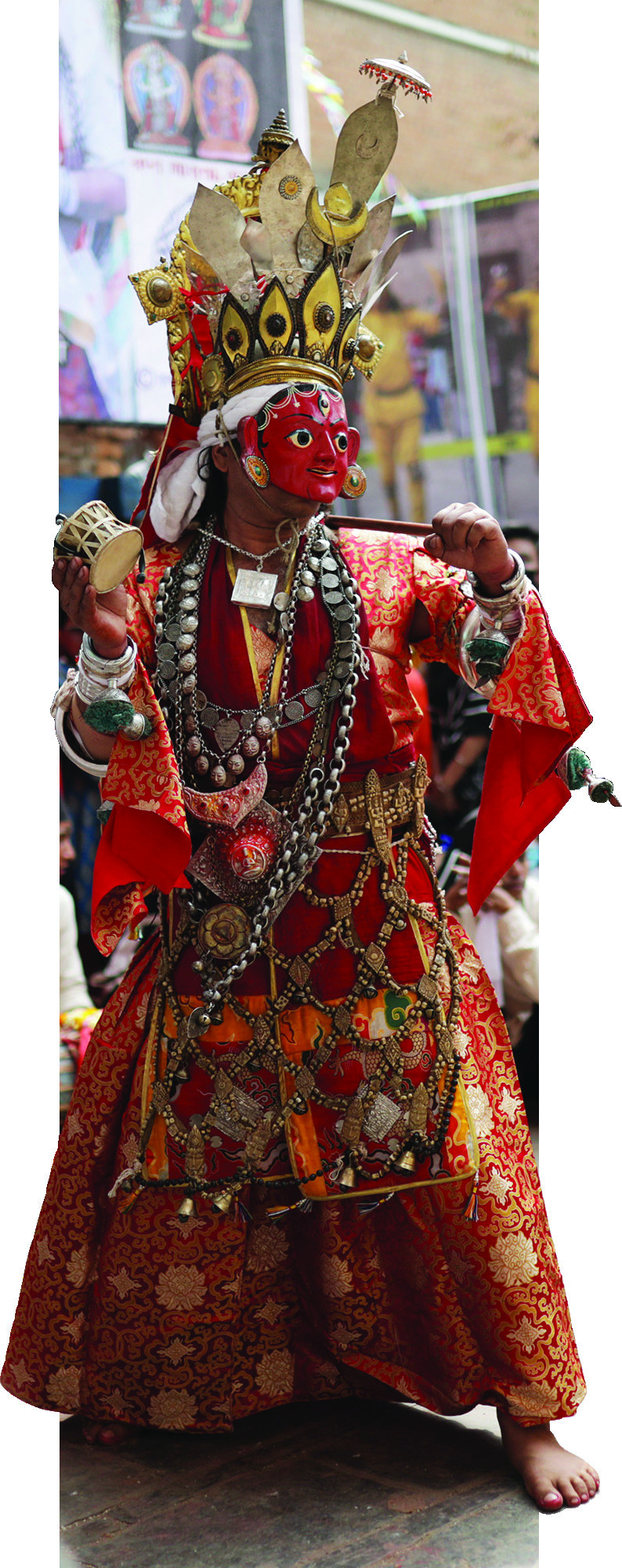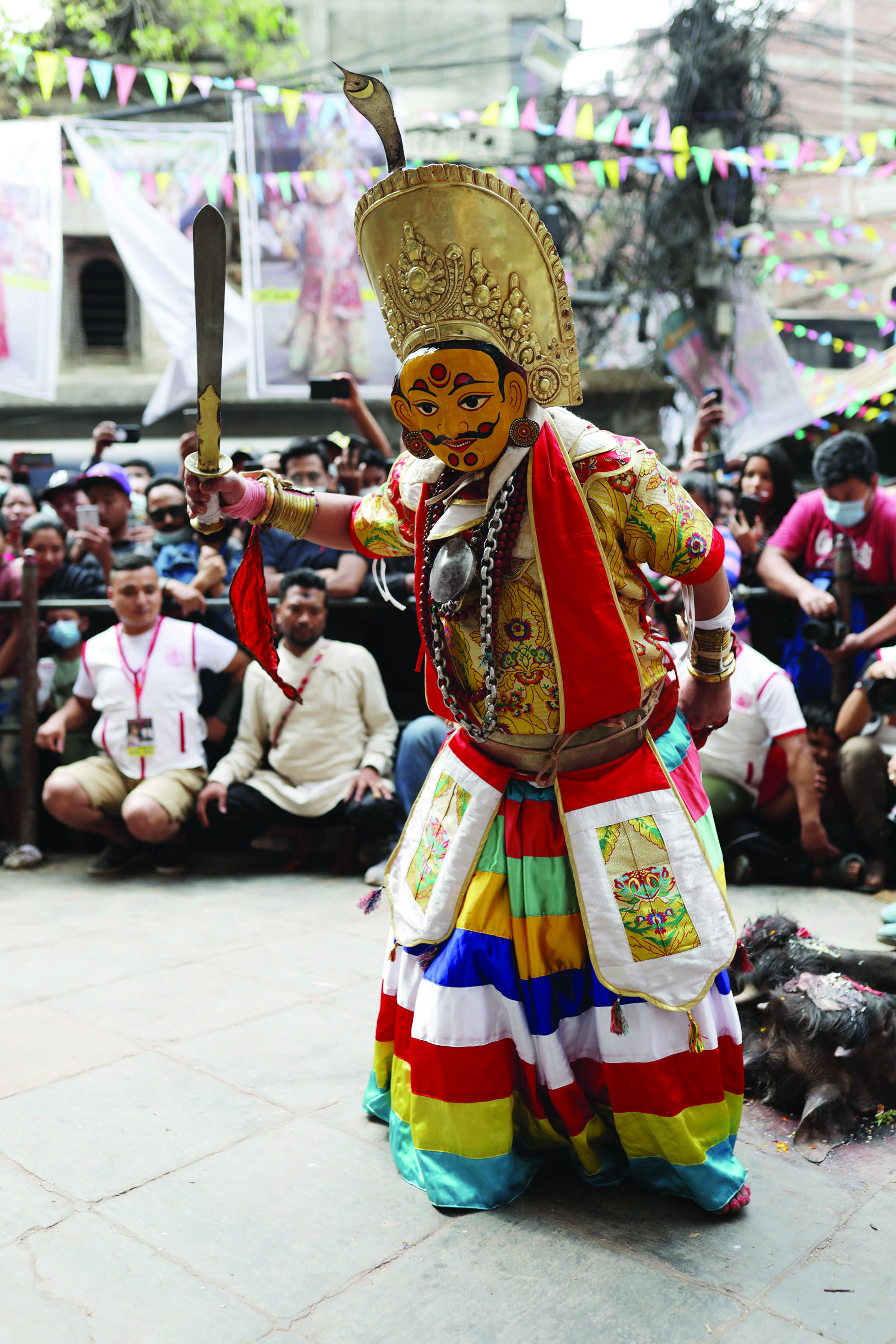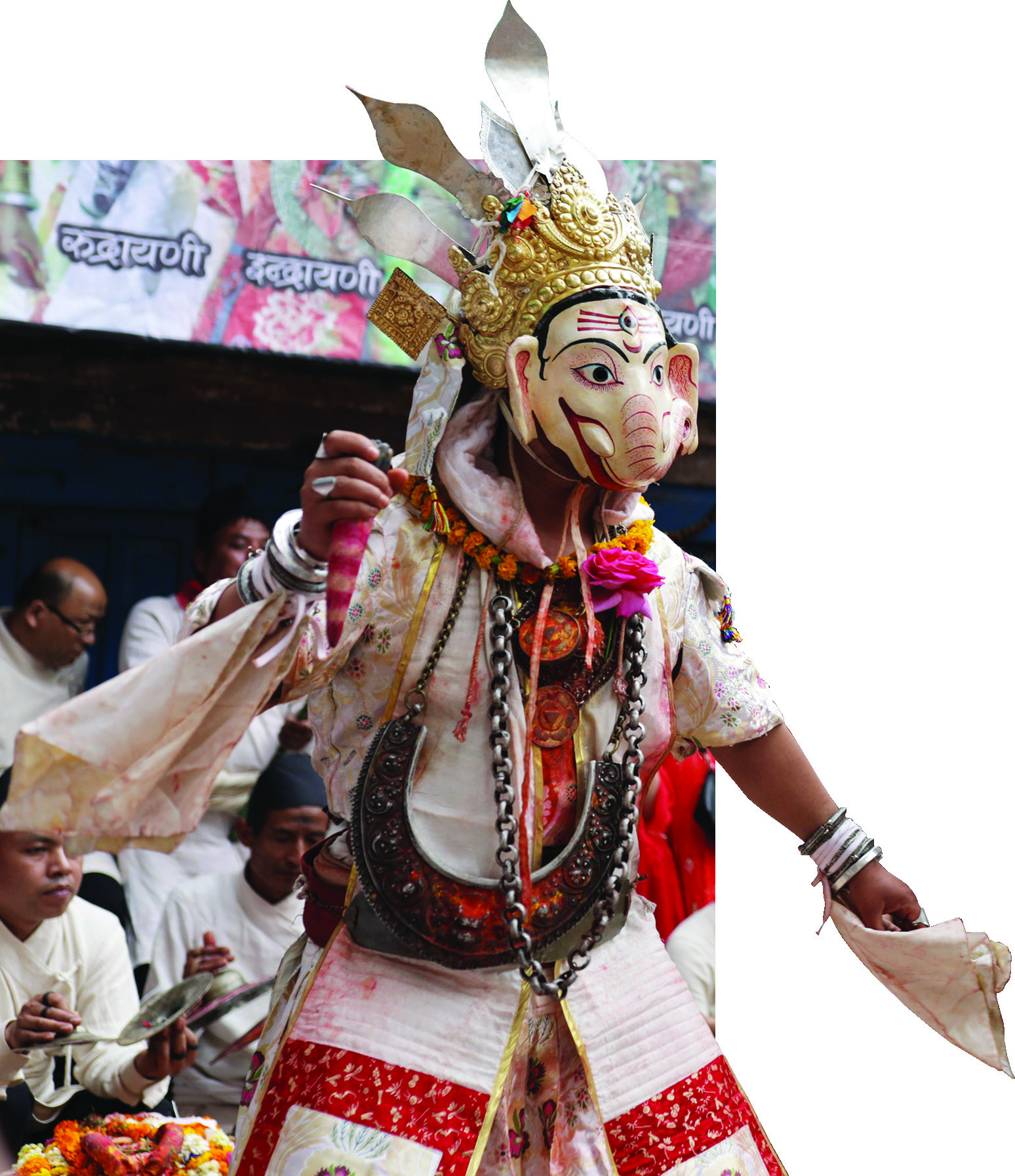Preservation Amongst Change

The Resilience of the Bara Barshe Nardevi Naach
The Barha Barse Nardevi Naach is a religious dance performed to pray for the protection of the country and its people. This highly revered dance was once lost but revived thanks to the strong faith of its community. In the heart of the Himalayas, Nepal is a land filled with breathtaking beauty, a deep cultural legacy, and varied traditions. Amidst this richness, there’s a struggle to safeguard these important aspects of our culture. The Barha Barse Nardevi Naach (12-year Nardevi dance), a cultural gem, faced the threat of disappearing amidst the rapid development and cultural shift of the community. Yet, thanks to the strong commitment of local communities, this traditional dance has been revived, highlighting the significance of preserving our cultural heritage.
History
There is no prominent evidence on which period this dance was started from, but it is believed that the Barabarshe Naradevi dance holds a significant divine energy which protects the state. As the name suggests, the dance is dedicated to Goddess Naradevi. The temple where the dance is initiated is situated in the older parts of the Kathmandu valley close to Asan Bazar, believed to have been founded by the Lichchavi ruler Gunakamadev, founder of the ancient city of Kantipur. The temple is embellished with three silver statues of Kali and is constructed in a three-tiered architectural style. The support pillars are artistically crafted, while the roofs are gold plated. This temple is accessible to devotees for worship.
When is the Dance Performed and Why?
 The dance, also known as Barshe Nareadevi Swetkali Parba celebration, is said to have restarted in 2009 (2066 BS). According to the organizers, Amar Malla, the king of the Malla Dynasty at that time, really respected the goddess and thought she helped him win battles against neighboring kingdoms. On Pahan Charhe (falling in April), he made sure there was a big dance festival in her honor to express gratitude and ensure that people would continue worshiping Naradevi for many years. It’s also believed that on this day, Naradevi appeared in a protective form, like a caring mother, to safeguard the state. Goddess Naradevi being a protective deity, this dance and performance of the masked Gods and Goddesses is believed to ward off evils and diseases, and also bring peace as well as prosperity in the country.
The dance, also known as Barshe Nareadevi Swetkali Parba celebration, is said to have restarted in 2009 (2066 BS). According to the organizers, Amar Malla, the king of the Malla Dynasty at that time, really respected the goddess and thought she helped him win battles against neighboring kingdoms. On Pahan Charhe (falling in April), he made sure there was a big dance festival in her honor to express gratitude and ensure that people would continue worshiping Naradevi for many years. It’s also believed that on this day, Naradevi appeared in a protective form, like a caring mother, to safeguard the state. Goddess Naradevi being a protective deity, this dance and performance of the masked Gods and Goddesses is believed to ward off evils and diseases, and also bring peace as well as prosperity in the country.
Is the Bara Barshe Naradevi Dance Performed Once Every 12 Years?
As the title suggests, “Bara Barshe Naradevi Naach,” people may assume that it is only performed once every 12 years. However, it is important to note that this dance takes place annually. However, every twelve years a cycle is completed when the rituals are performed in a more intricate and detailed way. During the event, masked Gods and Goddesses engage in a captivating dance parade, commencing from Devighar and concluding at Naradevi Dabali. The Naradevi Shree Swet Kali Conservation and Management Society, in collaboration with the local Maharjan and Tuladhar communities, oversees and organizes this dance, preserving the ongoing tradition.
Treasurer Macha Raja Dongol clarified “It is not that the dance is performed once in 12 years. It is performed every year but every 12 years, we begin a new cycle.”
What is the Essence of the Barabarshe Naradevi Naach?
The Naradevi Barabarshe Nacch is considered a very spiritually powerful ritual. The annual dance includes dancers masked as 12 gods: Naradevi, Kumari, Bhairav, Barahi, Ganesh, Mahalaxmi, Narayani, Indrayani, Rudrayani, Brahmayani, Singhini, and Byaghini. But every 12 years, Sutha: Maju (Sukhawati Lokeshwor/Karunamaya), Mahadev, Chandeshwori, Kumar, Daitya, Dhwon and Khicha also come out. As you closely observe the dance, you’ll notice that the divine figures represented reflect the religious and social unity present in the Nepal Mandal. “The dance epitomized the harmony among Vajrayana Buddhism and the Shaiva and Shakta sects within Hinduism.”
The ritualistic dance of the BarhaBarse Bardevi Naach attracts a lot of local as well as foreign spectators and devotees. It still holds a significant role in the community as a grand festival. The goddess Nardevi is also revered as a powerful goddess of protection. However, preserving and continuing this dance is easier said than done.
The Naradevi Shree Swet Kali Conservation and Management Society say that they are not quite receiving the budget they require to conduct the program, yet they have been trying very hard to conduct it with the funds that they have received. The funding from Guthi Sansthan is shockingly low. Tuladhar, a member of the society expressed his disappointment, noting that despite being in 2024, the Sansthan still sticks to rates set back in the 1960s. They only allocate 85 paisa, less than a rupee, for the daily worship at Naradevi. To put it in perspective, even the smallest packet of vermillion at the nearby Ason market costs Rs. 20.
How is this Dance Performed?
This dance is performed with the enthusiastic sound of the drums beating, cymbals exploding and bells ringing. Masked in divine attire resembling Gods and Goddesses, the performers sway to the resonating sound of the bells. Performing this dance while wearing heavy masks and costumes isn’t easy. After many months of practice and hard work, the dance takes place in the open area of Nardevi Dabali. Every year, new costumes are stitched, masks are repaired, and supplies of jewels and musical instruments are restocked in preparation for the event.
You may also like : The Unique 12 Years Festivals of Nepal | Barha Barsey Mela

What Other Places Is this Dance Performed?
During the dance, performers dressed as gods will move through the city, following a route from Nardevi to Tengal, Bangemuda, Ason, Janabahal, Indra Chowk, Hanumandhoka, Chikanmugal, Jaisidewal, Kwohiti, Bhimsensthan, Kasthamandap, Yetka, and back to Nardevi. This dance starts on the day of Pisach Chaturdashi and lasts for more than 24 hours. This dance is organized in other locations too. People are now aware about the importance of its preservation and in keeping the tradition alive for the next generations. Despite the challenges of preservation in a fast-changing society, the Naradevi dance continues to be showcased at 12 locations over the years. Additionally, it is regularly performed during the annual Kartik Naach festival held in Patan Dabali and Kathmandu Durbar Square.
